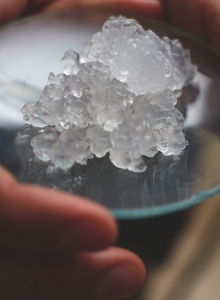
World’s First Pilot Facility To Produce Nanocellulose
By Canadian Packaging Staff
General Innventia Nanocellulose
Photo by Johan Olsson
Innventia AB, a Stockholm, Sweden-based world leader in research and development relating to pulp, paper, graphic media, packaging and bio-refining is constructing the world’s first pilot plant to produce nanocellulose (see photo at left) in the city.
With this major venture, Innventia is taking a decisive step towards the industrialization of its energy efficient production process for the new super material.
Nanocellulose is a material extracted from wood fibers that has exceptional strength properties, similar in strength to Kevlar, a light weight material used in armor protection. However, in contrast to Kevlar and other materials based on fossil fuels, nanocellulose is completely renewable.
“For a long time, there’s been a great deal of interest from industry in utilizing nanocellulose as a strengthening component in other materials, such as paper, composites and plastics,” relates Mikael Ankerfors, a research manager at Innventia. “We can also create new, more effective, environmentally compatible and renewable barrier films for packages used for foodstuffs.”
Innventia has high hopes for the super material, noting that it can be used to make membranes and other reserve parts for the human body, and can also be used as a provider of viscosity in foodstuffs; in other words, it is able to replace carbohydrates and other additives in foodstuffs, which are known as low calorie products.

Photo by Istvan Siro/David Plakett
“Nanocellulose will be something revolutionary for the foodstuff industry too,” continues Mikael.
With the construction of the plant, nanocellulose will be able to be produced on a large scale, with the process being economically efficient. Previously, the homogenizing stage in the process was much too demanding, when it comes to energy. Due to the process developments carried out by Innventia, the energy consumption has been reduced by a total of 98 per cent.
Mikael explains, “This is equivalent to a saving of 29,000 kWh per tonne. To give a comparison, consider that the heating of a normal sized house takes approximately 18,000 kWh per year. For a full-sized mill that furnishes a paper mill with nanocellulose, this means a saving in energy that would be equivalent to 8,000 houses a year.”
Innventia is making a major investment in this technology by constructing the first pilot plant in the world for producing on a larger scale.
“This is a natural step in the investment we’re making in nanocellulose. In order to develop applications, such as paper and composite materials, the raw material produced in a lab is not sufficient. As the only company in the world manufacturing this, we’re extremely proud to be able to offer industries real opportunities to participate in this field, which is so important for the future,” concludes Mikael.
For more information, visit www.innventia.com.
Advertisement

